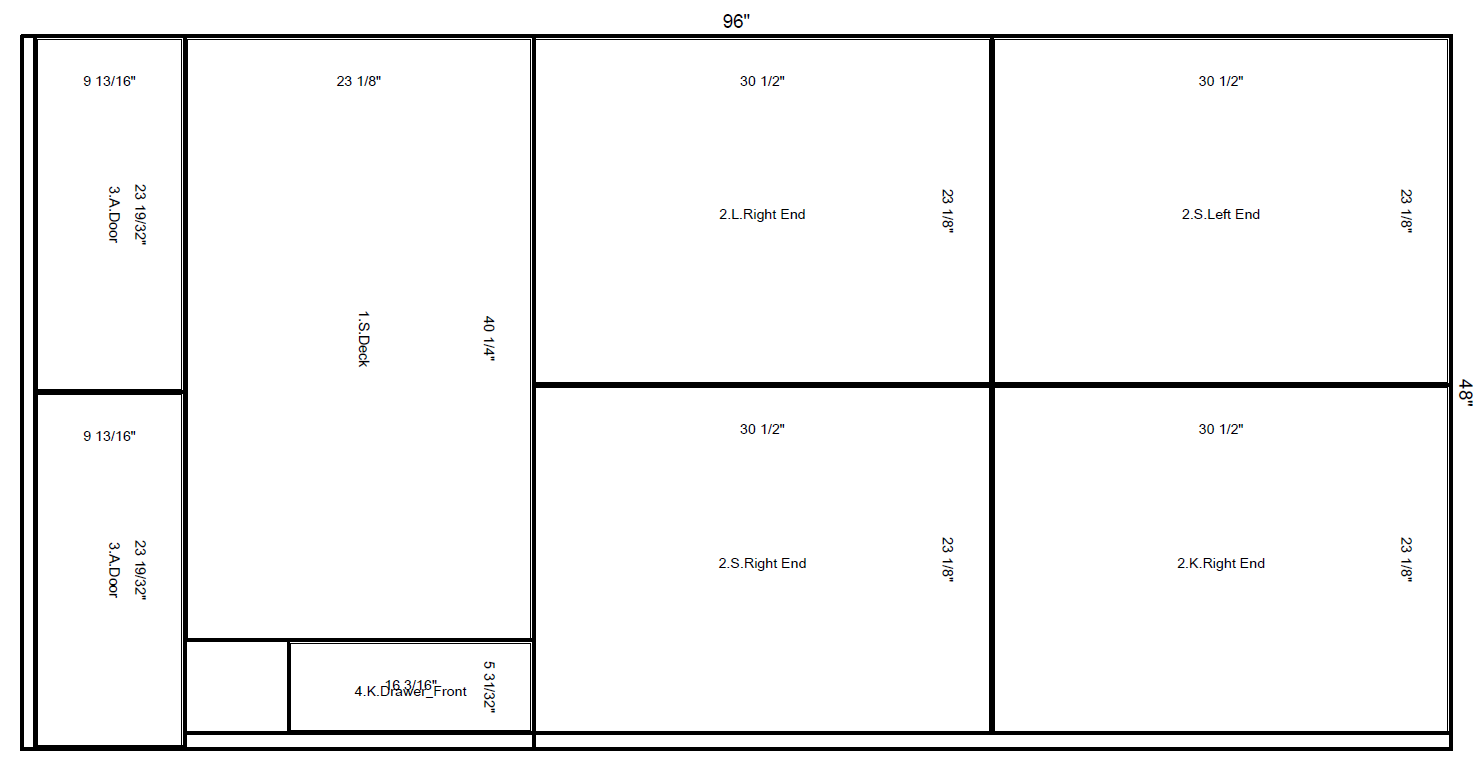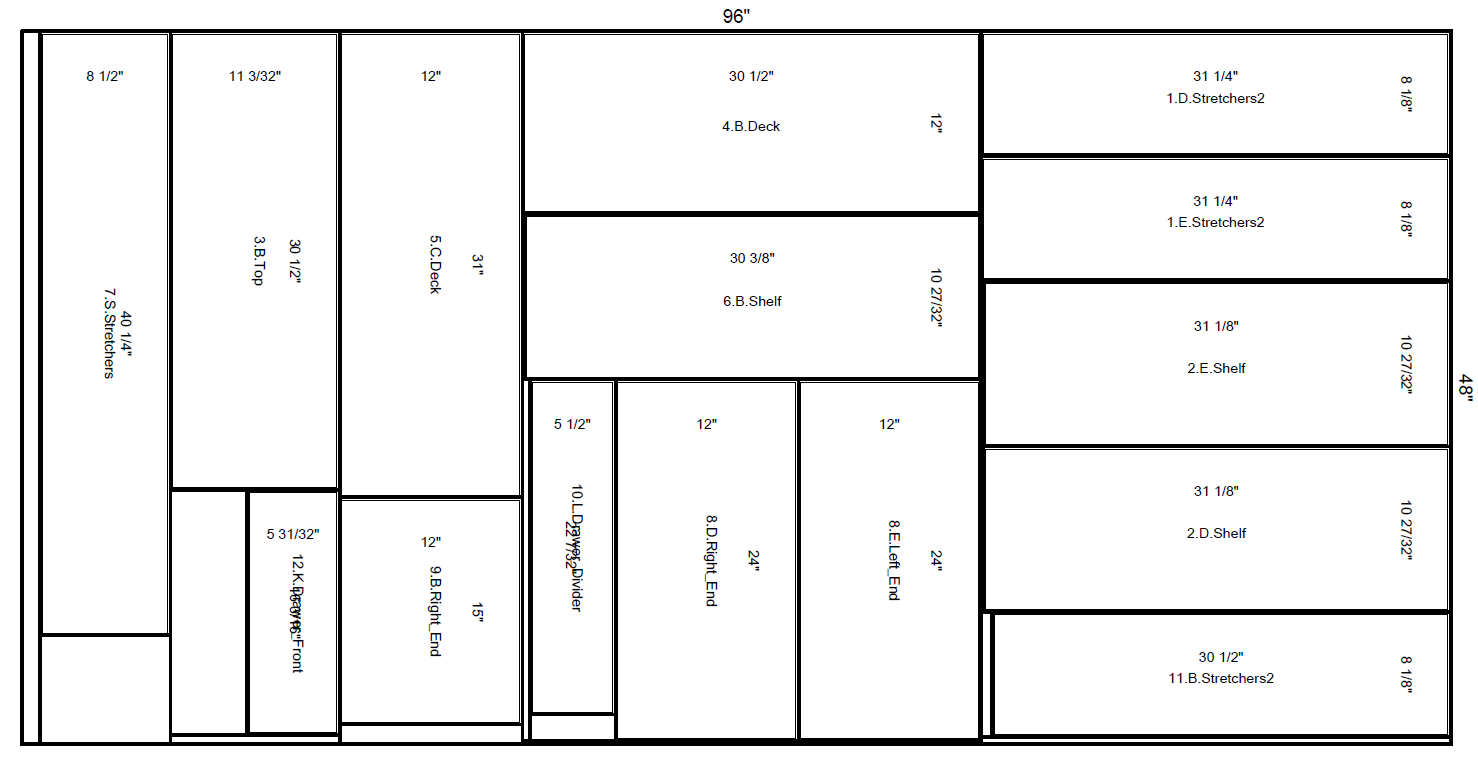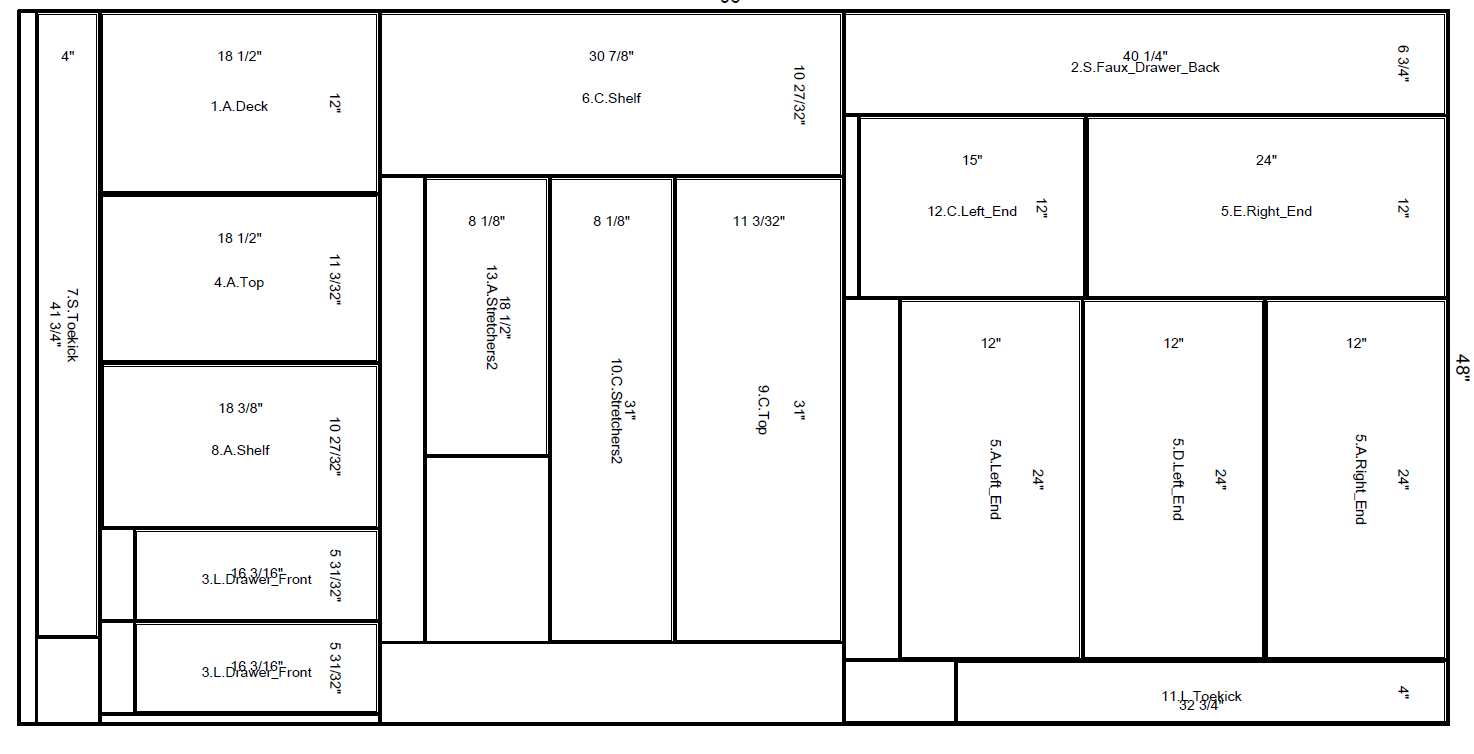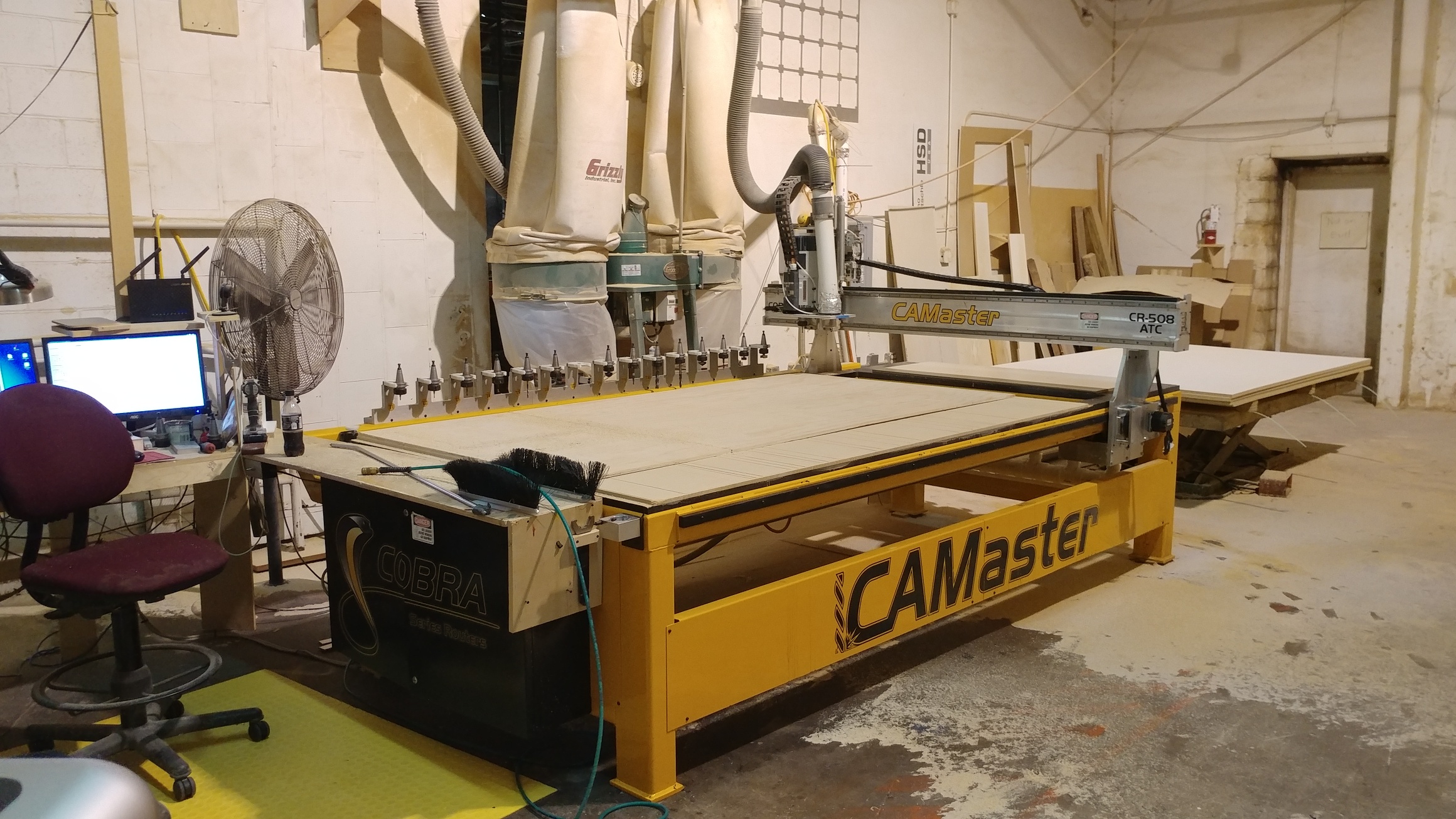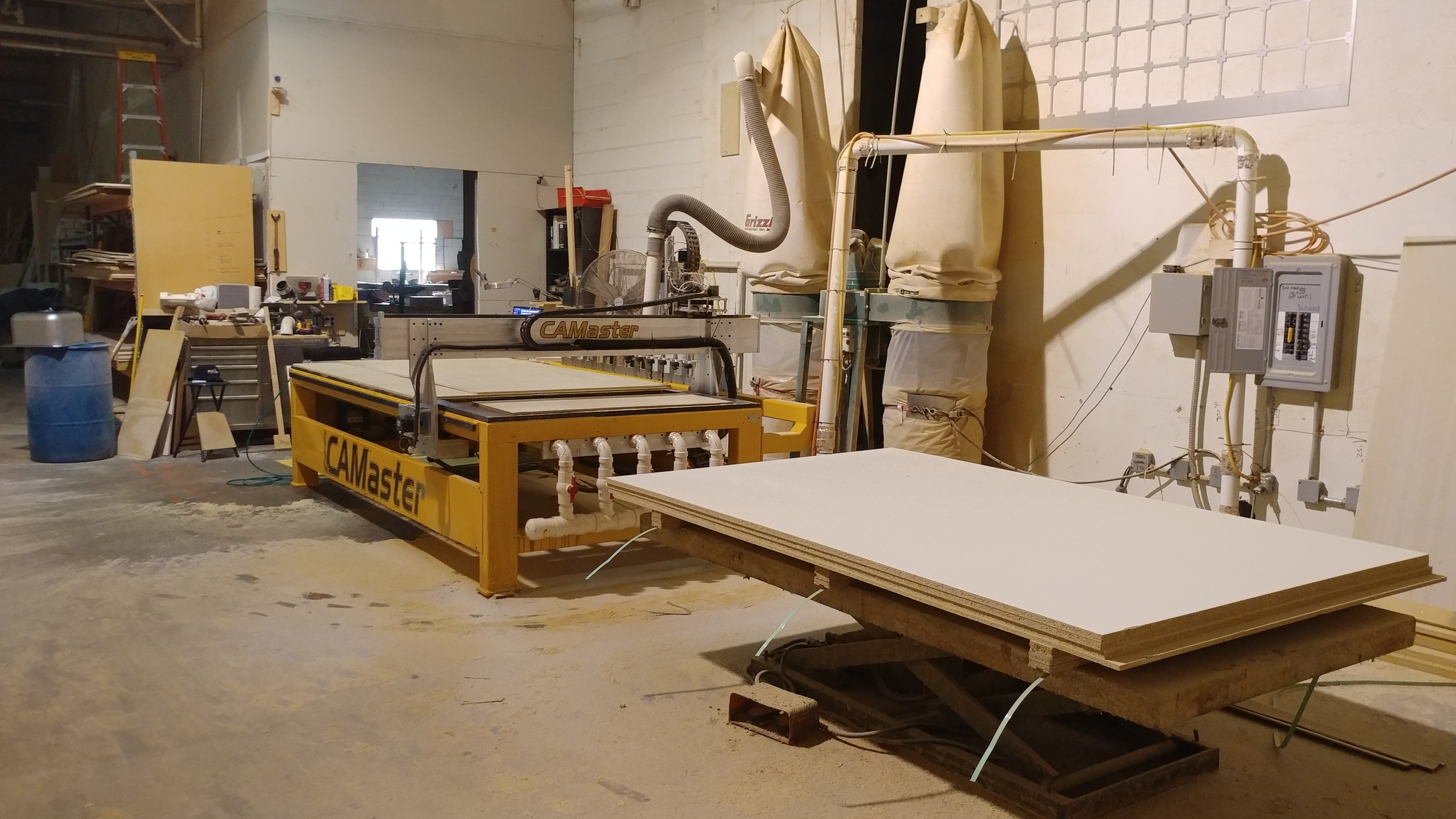I'd agree there's a lot of outdated automated equipment out there, a lot not worth looking at. I got lucky, I bought my router used at an auction. I think the owner had some medical issues and was retiring. Or he was just sick of it. The machine was less than two years old and had 242 hours on it, and I paid a bit less than half of new. The auction was in the middle of nowhere, and was run by a local auction service so it didn't have the reach like IRS or Machinerymax would have. I paid $53k for the router with tax, another $6k to move it, the tech to do the startup and give it his seal of approval was another $1600. I put a dedicated dust collector on it, that was another $5k. I probably spent $500 on tooling and some more tool holders right away. The numbers are fuzzy and there's something I'm forgetting. I figured I had a bit less than $70k into it all said and done. When I was looking at new, I was budgeting $150k, which was likely a little high, but I like to lie to myself so I feel good when it costs 130.
I think the vertical panel saw is faster and easier to be accurate, even taking the loading of full sheets out of the equation. I don't have a slider in my shop, and I don't have a ton of time on a one either.
So take that for what it's worth. I think a vertical panel saw is also marginally safer, being the blade is away from you. Though I did try and take the tip of my finger off with it last fall when showing a new guy how to use a panel saw... So there's that. No stitches, just wounded pride.
I have a Weeke Vantech 480. It's pretty much their baseline machine, its a 4x8 table.
Melamine is hard on bits. Somebody else should weigh in because we don't do much melamine. I think I've read most people are getting 50-100 sheets on average out of a compression bit before chipping is problematic. With plywood, we probably ran 200 sheets before I started wondering if I should swap out the cutout bit. The bit we use for dados doesn't seem to wear as quickly. We're using Vortex, they're semi close and if I order something, it shows up the next day.
A cnc spindle doesn't compare to a hand held router. RPM is likely too high with a handheld, the feed rate is erratic, your arms aren't as stiff and stable as a gantry. You are probably using a straight bit versus a bit with some shearing action.
My cabinets are machining intensive. Even more so since I got the cnc. Partitions are dado'd into decks. As are stretchers (front and rear) on drawers, and the nailer rabbeted into ends, and notched on partitions on base cabinets. On wall cabinets the bottom deck runs to the wall, so a rabbet has to be plowed out to accept the cabinet back. Now with the cnc, my nailers are dado'd to index the partitions, as are my stretchers. That way the benches don't really need to measure much, (other than to double check the idiot in the office doing drawings, me) The stretchers that go through partitions are also dado'd and the partition is notched to accept them. I didn't dado nailers or stretchers doing it manually before, but it's fricking awesome. We even setup a joint for running partitions through decks, like when you have an opening above another, in a sort of half lap that is all notched and dado'd together. We don't bother with nails and glue on those. It'd not going anywhere once the frame and back are on, it literally can't move.
If you're doing euro, it's super simple to set everything up with blind dado's.
We're using Mozaik for the bulk of the cabinet parts. It creates the programs for the cnc, and cutlists for doors, and drawers. We don't use a cut list for face frames.
Odd ball stuff we cut in the cnc software. Woodwop. I'm very fortunate in that one of my guys has a ton of experience with it and when I get stuck on something stupid, he bails me out. I still have him double check anything I'm squeamish about. I don't want to ding up my baby. I hated Woodwop at first. But it's capable of a lot more than I am at this point. It's capable of more than my machine is as well. With a new machine, I think you get a week of training at Stiles on Woodwop and running the machine. I like that you can build variables and make anything parametric. It's nice once you have the math figured out just changing a number in a variable table to tweak it for another application.
I didn't like Mozaik at first either. I tried it four or five years ago, and wasn't impressed. I tried it again after getting the cnc and it had improved greatly. After doing a few training sessions I was pretty confident it was the correct choice for my shop.
You can do a trial subscription for three months. It comes with a couple hours of training. I highly suggest making use of the training to make a fair assessment as to whether the software is right for you or not. I really like it. I like their way of doing business, and I like that the software is constantly improving. Roger Taylor has put together solid platform that I think fits the smaller shop extremely well. Probably works well in big shops too, but running 50 guys is well outta my league and I'd be talking out my ass if I commented. Mozaik has a forum as well that is helpful.
The full CNC version costs $125 a month. Additional seats are another $25 a month. Another software company, on this planet... will rape you for each additional seat and charge you more per year than the annual Mozaik subscription just to maintain your status as current. And they'll charge you for the post processor. And want $25,000+ up front. I don't care for their way of doing things.
A cnc is a lot of money though. And it won't go real well at first. For me, it's been a godsend. We're small, and I was the only one doing cut out. It's freed up hundreds of hours a year for me personally, it has greatly simplified some odd ball tasks, and it has expanded what we are capable of. I can't say it's right or wrong for you, but it has been very right for me. I'm not selling my Streibig anytime soon either, it's too handy. I might have them tuck that thing in the coffin with me. When I went out on my own it was the one tool I desperately wanted and it took me seven years to get one.
A slider is a much less expensive option. Who knows what direction this little nightmare house of cards we call the economy is going to go. I have a Cantek dovetailer. It's not a great machine, but I think Cantek builds a product that is an excellent value. It does the job well, it's just not very refined.
